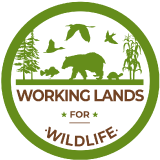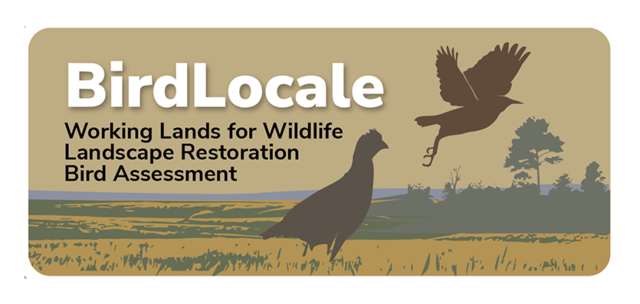-
SFE Webinar: Utilizing Terrestrial Laser Scanning (TLS) for Land Management by US Fish and Wildlife Service Southeast
-
by
Web Editor
—
published
May 05, 2025
—
filed under:
WLFW,
News & Events,
Wildland Fire,
News,
Working Lands for Wildlife,
Events
A free one-hour webinar hosted by the Southern Fire Exchange, the US Fish and Wildlife Service Southeast, the University of Florida IFAS, and the Joint Fire Science Program.
Located in
News & Events
/
Events Inbox
-
News: Opportunities for Research on Carbon Sequestration in Longleaf Pine Ecosystems Fact Sheet
-
by
Web Editor
—
published
Oct 30, 2023
—
last modified
Dec 12, 2023 08:40 PM
—
filed under:
Wildland Fire,
News,
Working Lands for Wildlife,
WLFW,
Tall Timbers
Based in part on the recent Fact Sheet on Opportunities for Research on Carbon Sequestration in Longleaf Pine Ecosystems by Kevin Robertson, Ph.D., Fire Ecology Research Scientist, Prescribed Burning has been added to the USDA Climate Smart Priorities List for FY24.
Located in
News & Events
/
News Inbox
-
News: Guidebook for Prescribed Burning in the Southern Region
-
by
Web Editor
—
published
Nov 27, 2023
—
filed under:
Wildland Fire,
News,
Working Lands for Wildlife,
Prescribed Burning,
WLFW
Learn how to plan, conduct and evaluate prescribed burns with this new Guidebook designed for burners of all skill levels. This book takes you step-by-step through the prescribed burning process in addition to providing more in-depth chapters on many of the concepts.
Located in
News & Events
/
News Inbox
-
New Mexico Highlands Contributed to Development of National Database of Forest Fuel Treatments
-
by
Web Editor
—
published
Nov 19, 2024
—
filed under:
Wildland Fire,
News,
Working Lands for Wildlife,
WLFW,
News & Events
In 2021, the three SWERI universities — Northern Arizona University, Colorado State University and New Mexico Highlands University — were conscripted as part of the Bipartisan Infrastructure Law to create a national database of hazardous fuel treatments, which include forest thinning and prescribed burns.
Located in
News & Events
/
News Inbox
-
Fire Lines Volume 14 Issue 3
-
by
Web Editor
—
published
Dec 20, 2024
—
filed under:
WLFW,
News & Events,
Southern Fire Exchange,
Fire Lines,
Wildland Fire,
News,
Working Lands for Wildlife,
Newsletter
Fire Science | Research Brief | New & Updated Technology | Recent & Featured Publications | SFE in Action | Florida Prescribed Fire Councils | Gopher Tortoise Council 2024 Annual Meeting | Our Programs | Our Products | Fire Community | Fire Science Exchange Network | Upcoming Events | Funding Opportunities | Additional Resources | SFE Partner Spotlight
Located in
News & Events
/
Wildland Fire Newletters
/
Southern Fire Exchange Fire Lines
-
Fire Lines Volume 15 Issue 3
-
by
Web Editor
—
published
Jun 23, 2025
—
last modified
Jun 23, 2025 07:27 PM
—
filed under:
WLFW,
News & Events,
Southern Fire Exchange,
Fire Lines,
Wildland Fire,
News,
Working Lands for Wildlife,
Newsletter
Fire Science | Research Brief | Featured Technology | Featured Publications | SFE in Action | In the Field | Our Products | Fire Community | Upcoming Events | Additional Resources
Located in
News & Events
/
Wildland Fire Newletters
/
Southern Fire Exchange Fire Lines
-
Southern Fire Exchange Survey & Regional Needs Assessment-Your Feedback Will Shape the Future of SFE
-
by
Web Editor
—
published
Jun 06, 2025
—
filed under:
WLFW,
News & Events,
Southern Fire Exchange,
Wildland Fire,
News,
Working Lands for Wildlife,
SFE
We Want to Hear From You! Are you involved in wildland fire, prescribed fire, or fire science in the Southeastern U.S.? Help shape the future of fire science outreach and research by taking our short survey!
Located in
News & Events
-
2026 Joint Fire Science Program Research Funding Opportunity
-
by
Web Editor
—
published
Jul 02, 2025
—
filed under:
WLFW,
News & Events,
Southern Fire Exchange,
Wildland Fire,
News,
Working Lands for Wildlife
The Joint Fire Science Program (JFSP) funding opportunities for fiscal year 2026 are now open.
Located in
News & Events
-
 Working Lands for Wildlife National Landowner Forum: Perspectives and Recommendations
Working Lands for Wildlife National Landowner Forum: Perspectives and Recommendations
-
by
Web Editor
—
published
Jun 19, 2019
—
last modified
Mar 31, 2021 04:25 AM
—
filed under:
Working Lands for Wildlife,
Landowner Information,
USDA,
Forum
In May 2016, 26 private landowners from across the country met in Denver, Colorado to talk with NRCS staff about what is working in the Working Lands for Wildlife partnership and what opportunities exist for improvement. Jointly coordinated by Partners for Conservation and NRCS, and including funding support from the Intermountain West Joint Venture, the 2-day
meeting provided a forum to share stories of success and challenges in order to maximize outcomes with future opportunities.
Located in
Landowner Information
/
Landowner Forums
-
The Nature Conservancy Private Lands Conservation
-
by
Tab Manager
—
published
Feb 18, 2023
—
last modified
May 29, 2025 05:59 PM
—
filed under:
Landowner Resources,
The Nature Conservancy,
WLFW,
Resources,
TNC,
Working Lands for Wildlife,
Landowner Information,
Private Lands
The Nature Conservancy works to establish local groups that can protect land. Private lands conservation is an innovative tactic that leverages the increasing interest of the private sector to take part in conservation. TNC works with landowners, communities, cooperatives and businesses to establish local groups that can protect land. Some of the main tools used to achieve these goals include land trusts, conservation easements, private reserves and incentives.
Located in
Landowner Information
/
Landowner Resources


